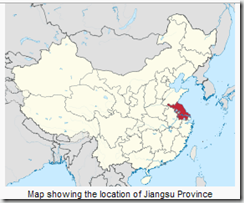
Earlier today I mentioned an unconfirmed report of an H5N1 case in Jiangsu province, China. This afternoon the WHO confirmed the story for Lisa Schnirring at CIDRAP (excerpt below).
China reports new H5N1 avian flu case
Lisa Schnirring
20 minutes ago.
Avian Influenza (Bird Flu)
China has reported a new human H5N1 avian flu case, marking the second case in recent months, an official with the World Health Organization (WHO) confirmed today.
Daniel Epstein, with the WHO's news media team, said China informed the WHO about the case on Feb 24. The patient is a 53-year-old woman from Jiangsu province who has a history of contact with poultry. The woman's symptoms began on Jan 31, and she was hospitalized on Feb 4.
Genetic sequencing suggests that she was infected with the 2.3.4.4b H5N1 clade, which is currently circulating widely in birds, Epstein said. "Since 2020, an increased number of avian influenza outbreaks have been reported in wild birds and poultry globally, and we can expect additional sporadic human cases."
The new case from China was first reported yesterday by BNO News.
"We can expect additional sporadic human cases."China's last H5N1 case involved a woman from Guangxi province who was sick in November and died from her infection. In a late December risk assessment, the WHO said the virus from that Chinese patient, as well as a recent case in Vietnam, also involved the 2.3.4.4b H5N1 clade.
China's last H5N1 case involved a woman from Guangxi province who was sick in November and died from her infection. In a late December risk assessment, the WHO said the virus from that Chinese patient, as well as a recent case in Vietnam, also involved the 2.3.4.4b H5N1 clade.
Unlike last week's Cambodian cluster, this virus is of the same clade as the H5N1 viruses that are currently spreading across Europe, North America, and South America.
There are, however, dozens of genotypes within this clade, and it is likely some are more dangerous than others (see Preprint: Rapid Evolution of A(H5N1) Influenza Viruses After Intercontinental Spread to North America).
Given the amount of bird flu circulating in the wild around the world, we should expect to see additional cases in the weeks and months to come.